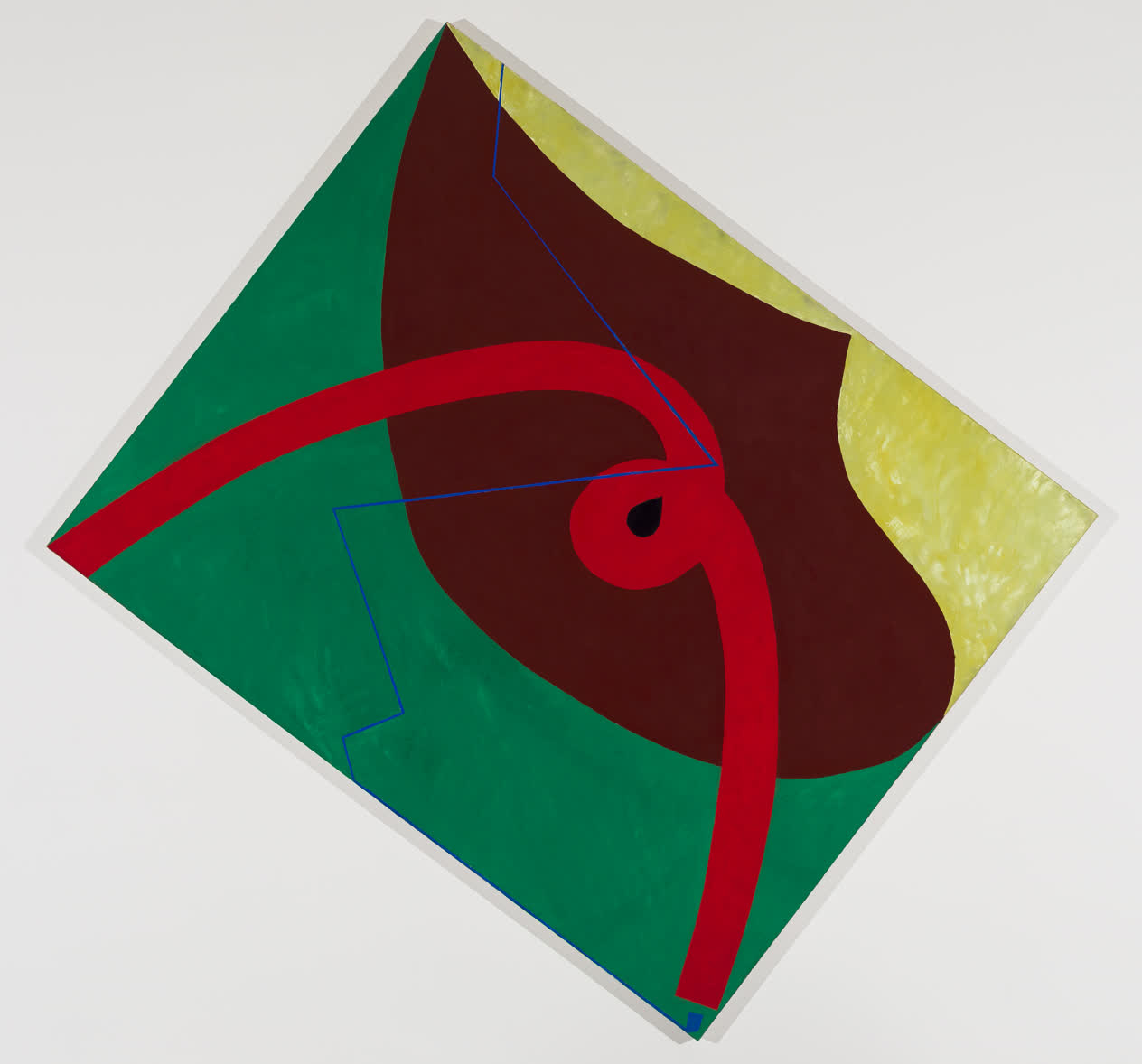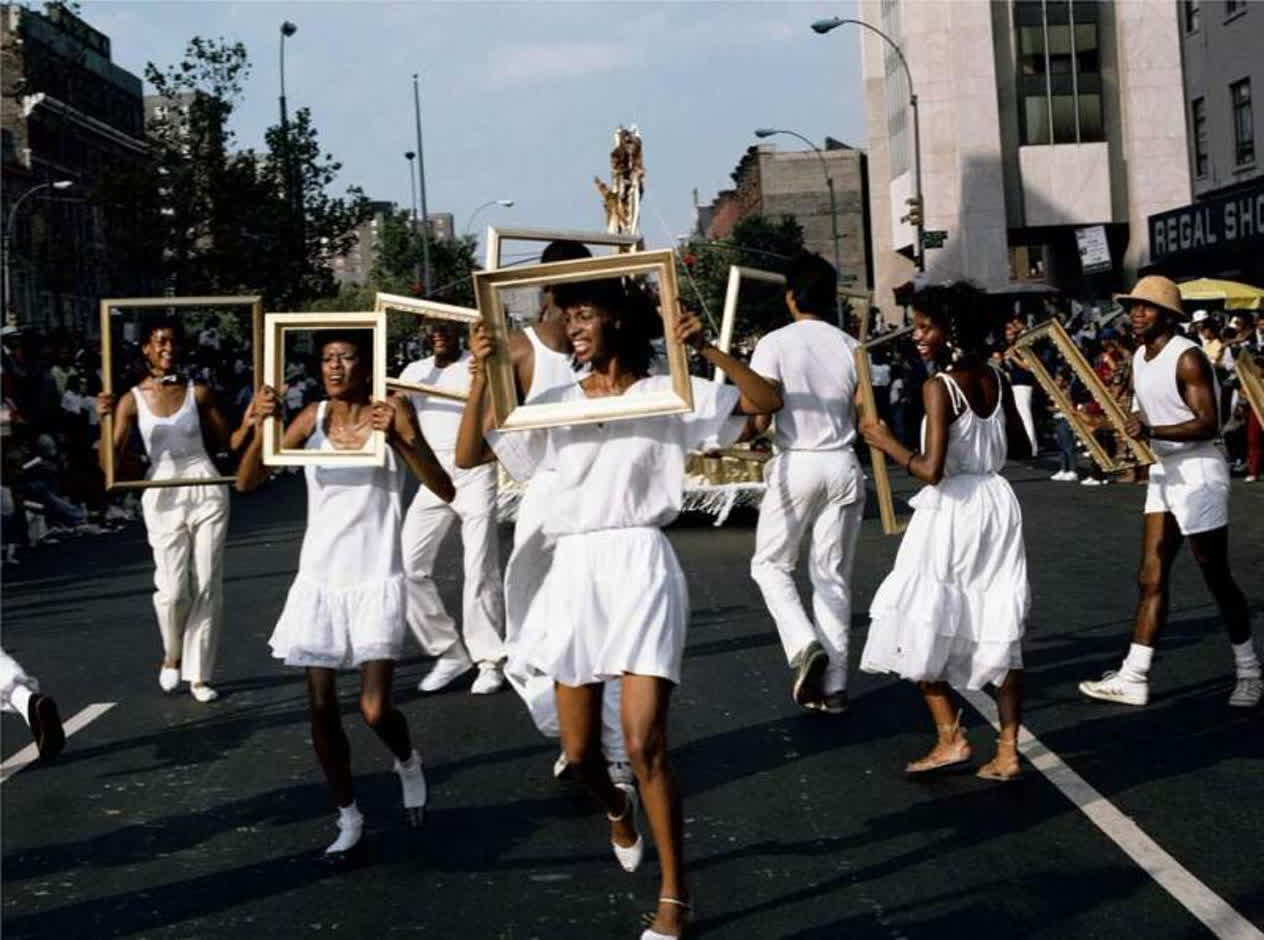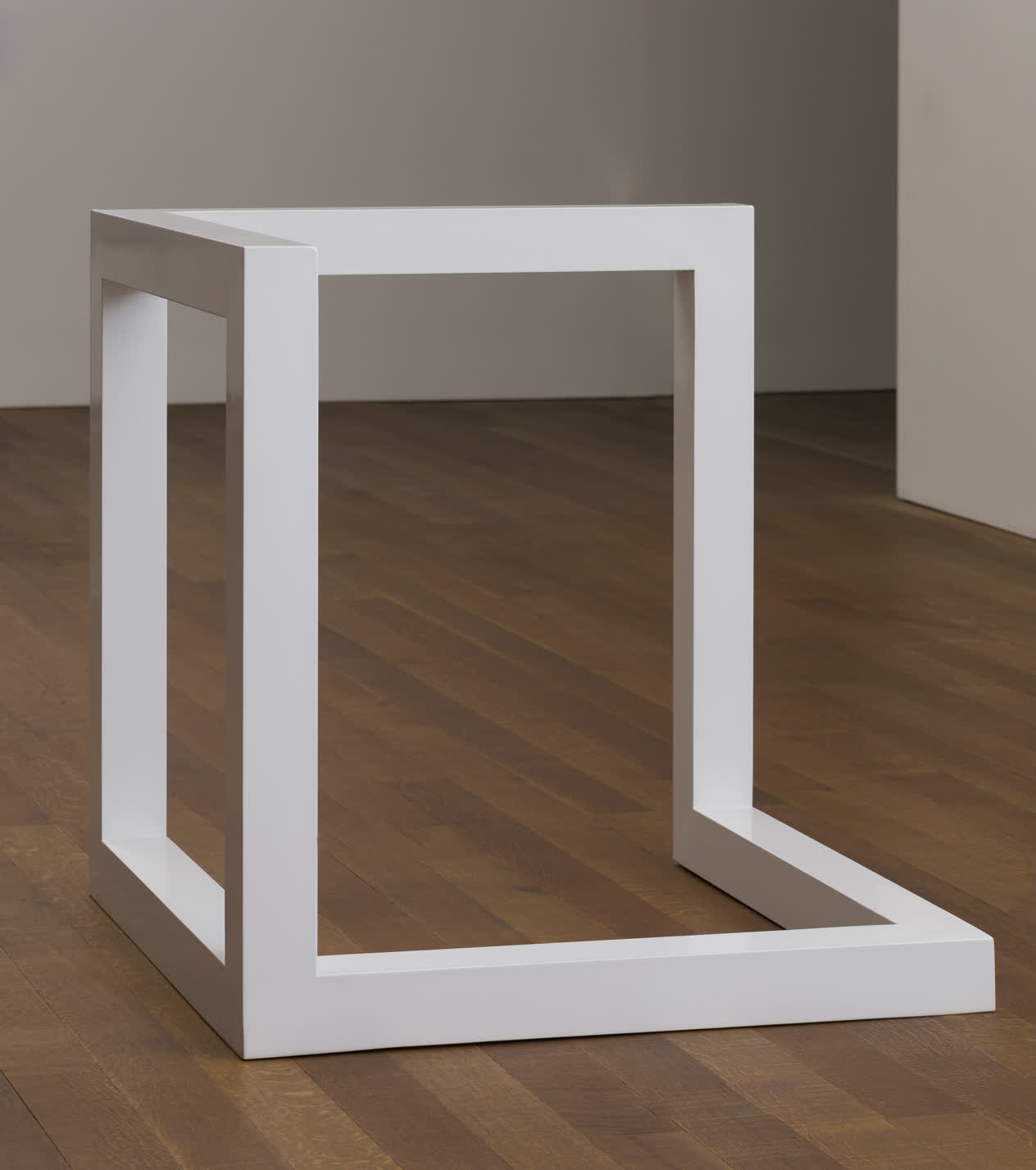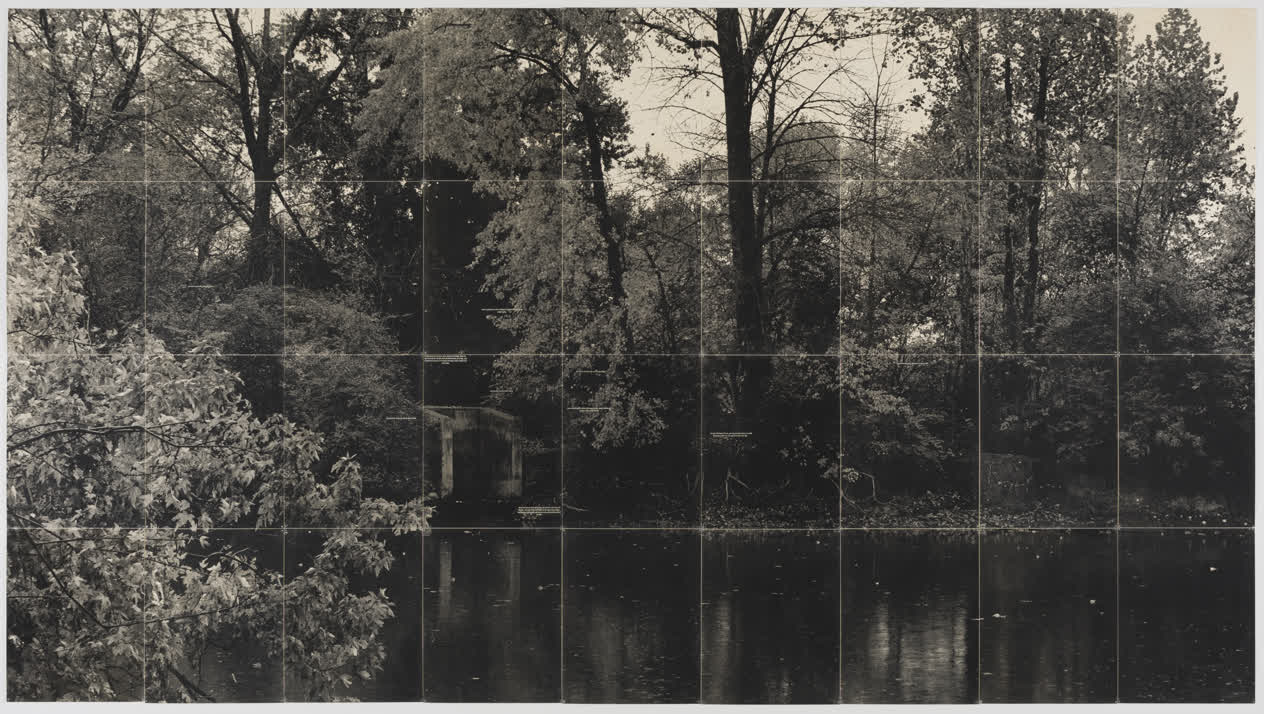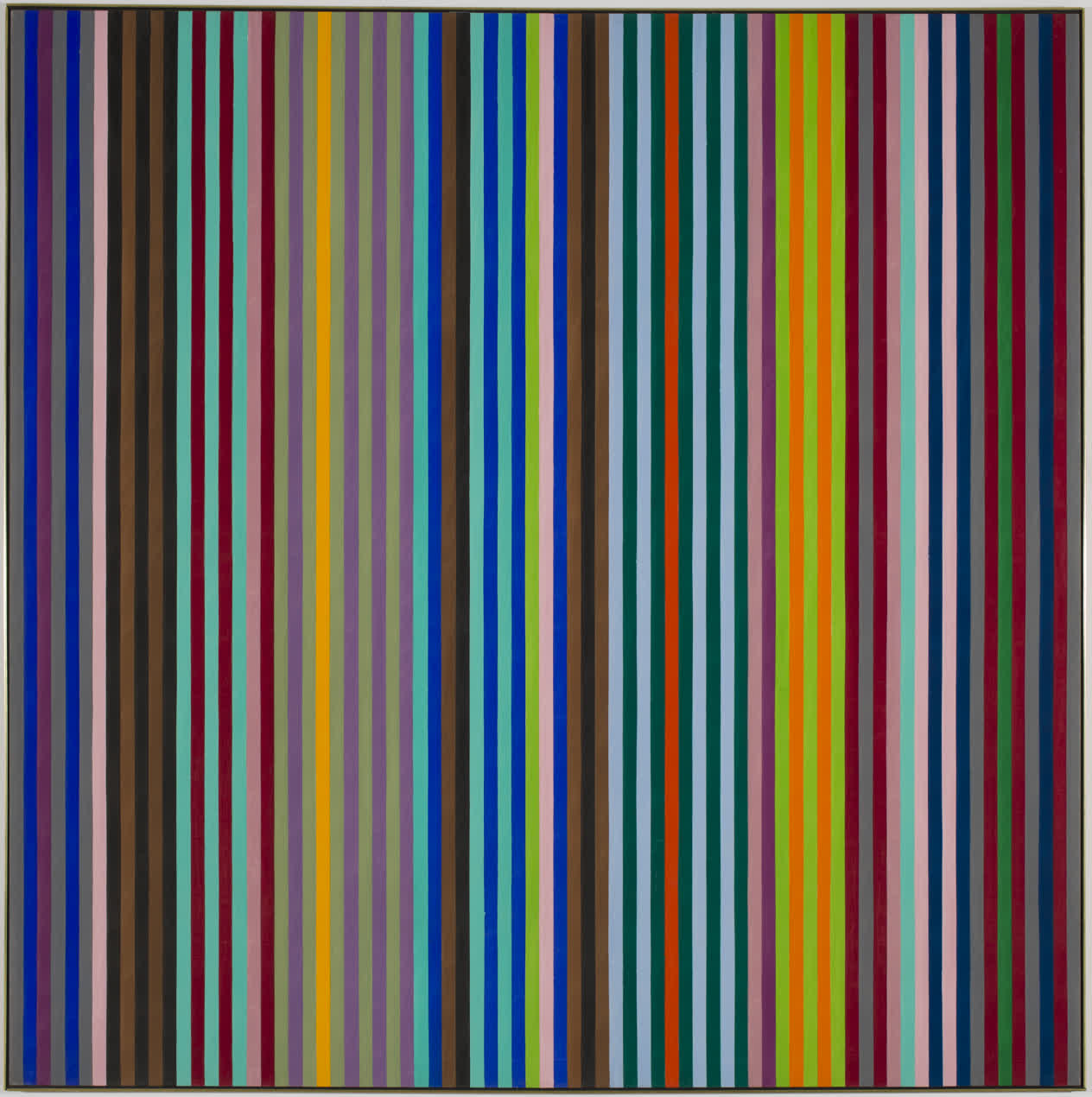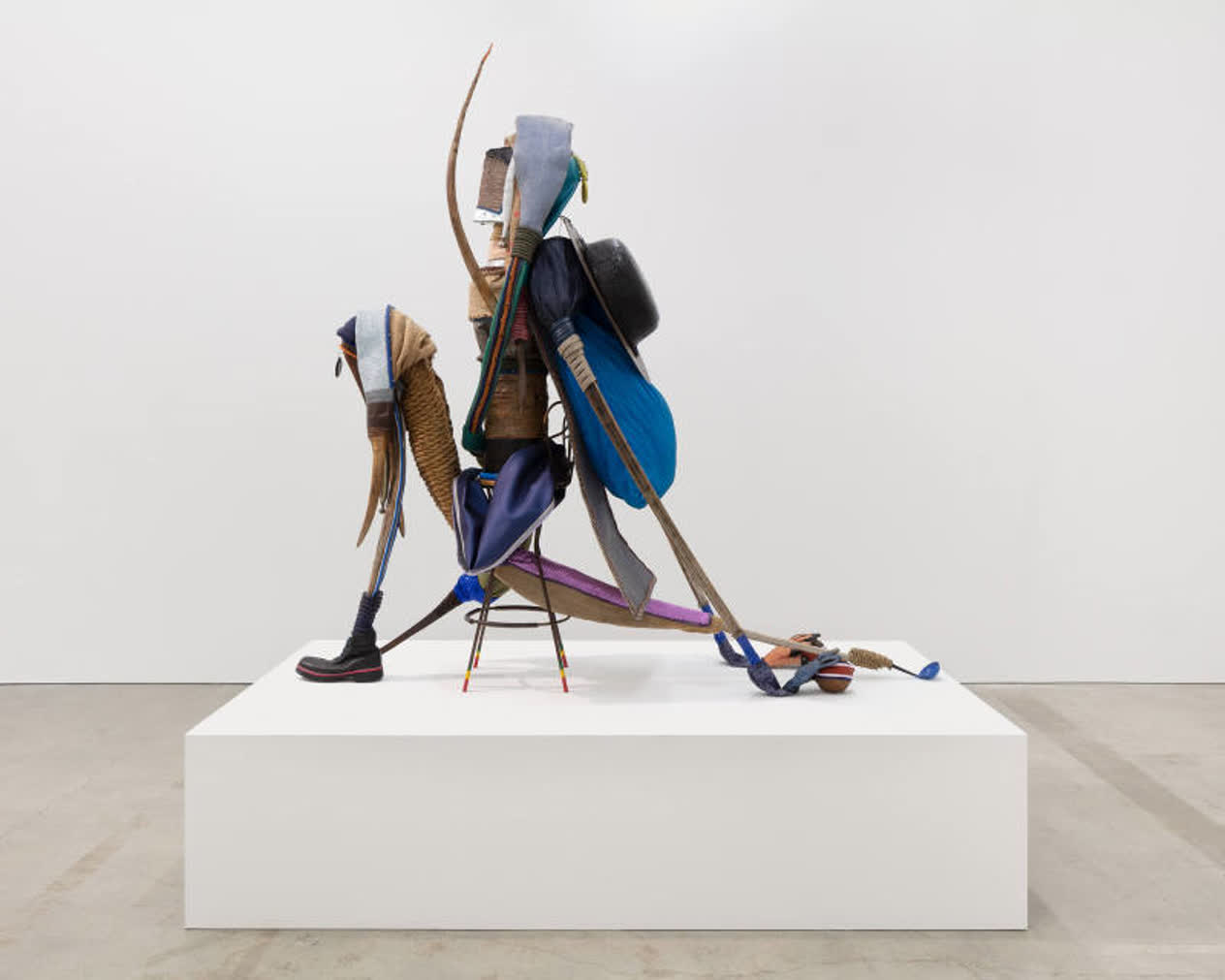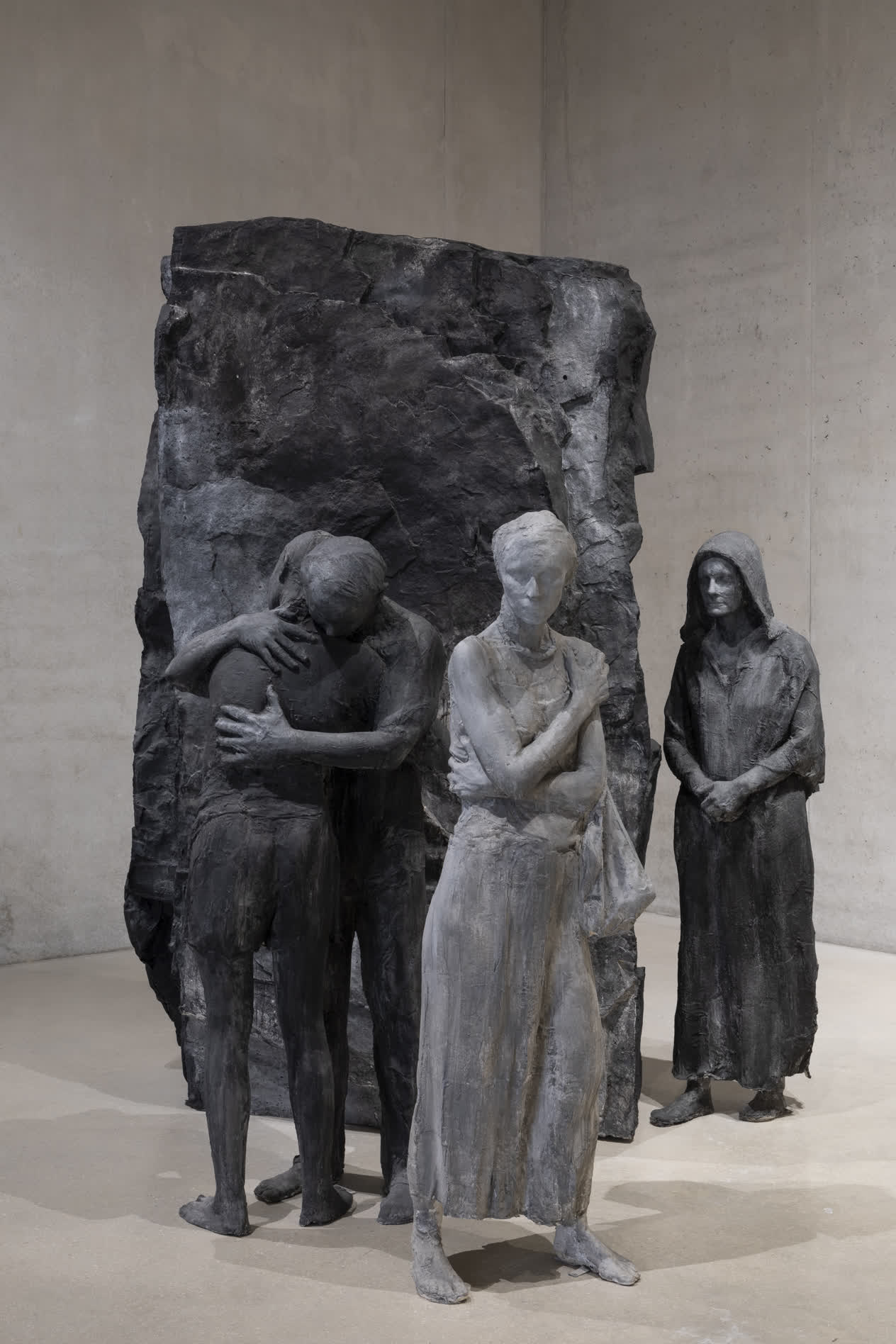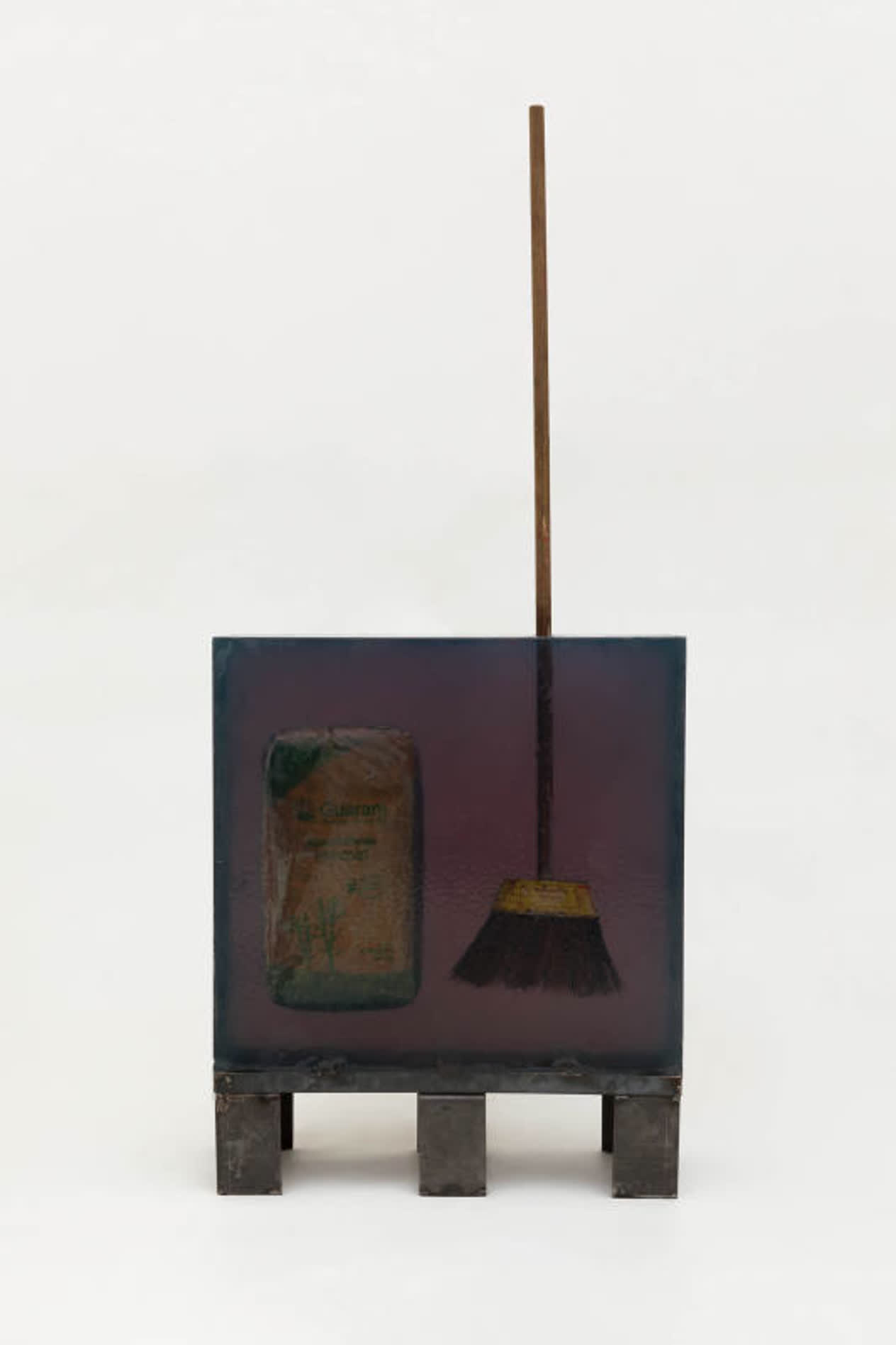Hayv Kahraman 6 Bends 2020
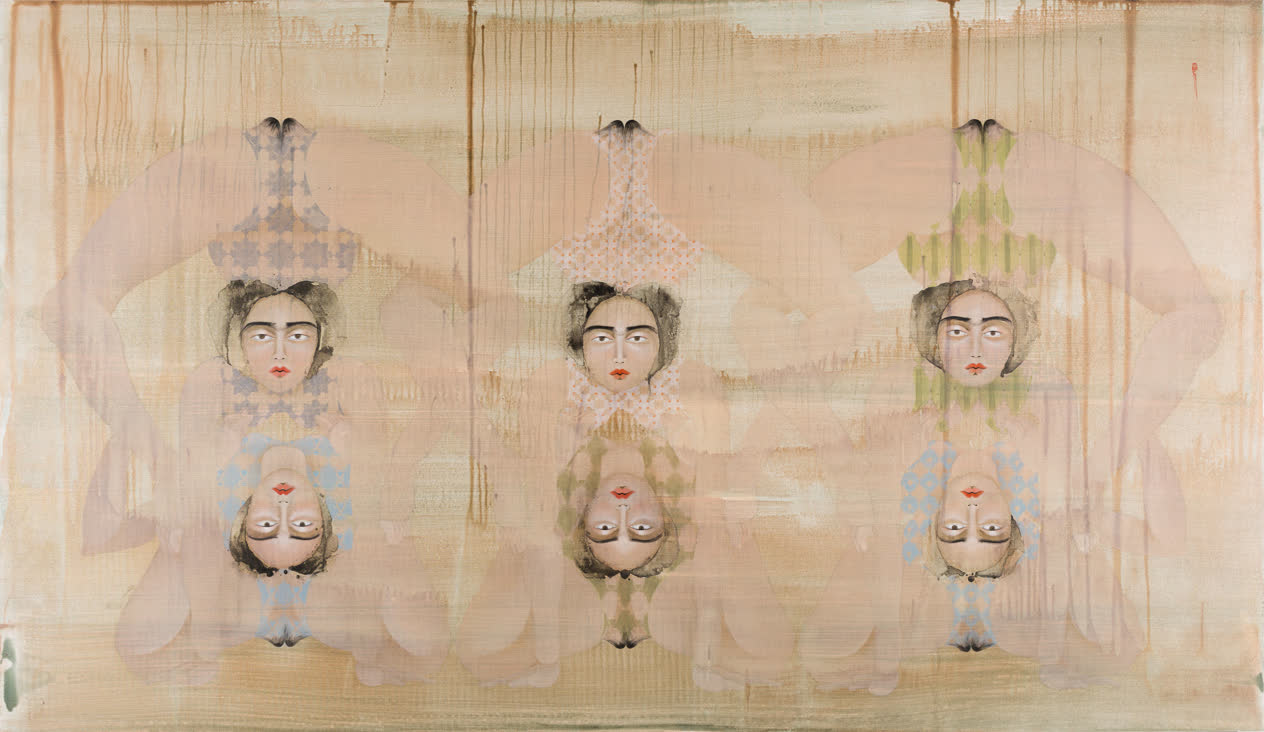
© Hayv Kahraman. Courtesy the artist and Pilar Corrias, London

Hayv Kahraman’s paintings are informed by her personal experience as an Iraqi refugee who grew up in Sweden and the United States. The artist developed a stylized self-portrait, a figure with dark hair and pale skin known as “She,” which appears in the majority of her paintings. Through repetition, the figure becomes a symbol for the collective female experience, particularly referencing experiences of Arab women living in the Western world. Kahraman sees the figures she represents as “colonized bodies,” Arab women who are subjected to exoticism, eroticism, sexism, and violence through the Western gaze. In 6 Bends, Kahraman references the movements of contortionists to highlight the bodily shift that occurs as it transitions to the “other” in a migratory, colonized context. Even while the contorted figures are depicted in poses that appear unbearable, they are also fetishized; in this painting the women fiercely look back, resisting dehumanization and challenging the colonizer’s power.
Identification
Title
6 Bends
Production Date
2020
Object Number
2020.093
Credit Line
Collection Pérez Art Museum Miami, gift of Phil Barker
Copyright
© Hayv Kahraman. Courtesy the artist and Pilar Corrias, London
https://www.pamm.org/en/artwork/2020.093
Copy artwork link
Physical Qualities
Medium
Oil on panel
Dimensions
60 x 104 x 2 1/2 inches
Visual Description
6 Bends is an oil painting on panel by Hayv Kahraman that stands sixty inches tall and one hundred and four inches across (or five feet tall and eight and a half feet across). 6 Bends contains an all-over brown wash in its background, giving it a watery, coffee-stained appearance. The main subjects of the painting are six slender biologically female figures painted in muted, translucent colors. Their bodies are stacked in two neat rows of 3 figures, each contorting to meet chest to chest in acrobatic symmetry, their faces looking directly at the viewer. In the background, the coffee-stain colored wash appears to defy gravity with drips of varying sizes that flow upwards toward the top from the bottom of the painting, as if the panel were turned upside down after this initial layer. The wash is applied with broad visible brushstrokes that sweep horizontally across the panel from edge to edge.
In the foreground, the six female figures in the painting look directly at the viewer with blank expressions. Their bodies are painted in translucent shades of brown and are almost indistinguishable from the background, giving their bodies a ghostly appearance. All of the six figures have the same exact face, as if they were copied from one to the other. They stare directly at the viewer, with half lidded eyes and emotionless expressions. Their faces all have small, red, pursed lips, brown eyes, and strong black eyebrows painted with single visible brushstrokes. Their eyebrows extend all the way to the sides of their faces where they meet neatly styled black hair. Muted arabesque patterns are painted lightly on their bodies to suggest clothing. Although the patterns cover their skin in the silhouette of dancer’s leotards, there is no other suggestion of fabric, and one can see their skin directly beneath this semitransparent layer of clothing. These arabesques vary in style and color. There is a muted grayish-violet fabric worn on the figure to the top left. The two figures flanking the bottom row wear powder blue. The figure in the top center wears ivory with orange triangles. Lastly, the figures on top right and bottom center wear sage and olive-green patterned fabrics. The top row of three women all stand on their arms. Their backs are bent over backwards and their legs are splayed wide open, dangling on either side of their faces. This contorted pose leaves their buttocks and vulvas directly above their heads. Their vulvas are drawn disproportionately large with pronounced lips and are emphasized with black ink where the lips meet, suggesting pubic hair, in stark contrast against their ghostly skin. The trio’s legs braid together where the center character’s legs meet and interlock with those of the outer two. The three women in the bottom row look at the viewer upside down as they support their counterparts in the row above. They bend over backwards—almost inhumanly–on their bellies to face the viewer, chests meeting with those on the figures in the row above, and leaving their own buttocks and vulvas exposed below. The lips of the vulvas of these figures are painted with the same exaggerated proportions and black ink as described before, highlighting their shape and presence. These figure’s legs are bent at the knee away from the viewer, their feet disappearing behind the dangling legs and arms supporting the figures above, confusing which limbs belong to whom. This elegant tangle of bodies twisting and painfully bending to inhuman extremes may speak to the fetishization of exoticizing of these women, while they are nonetheless aware of the spectacle of their othering.






